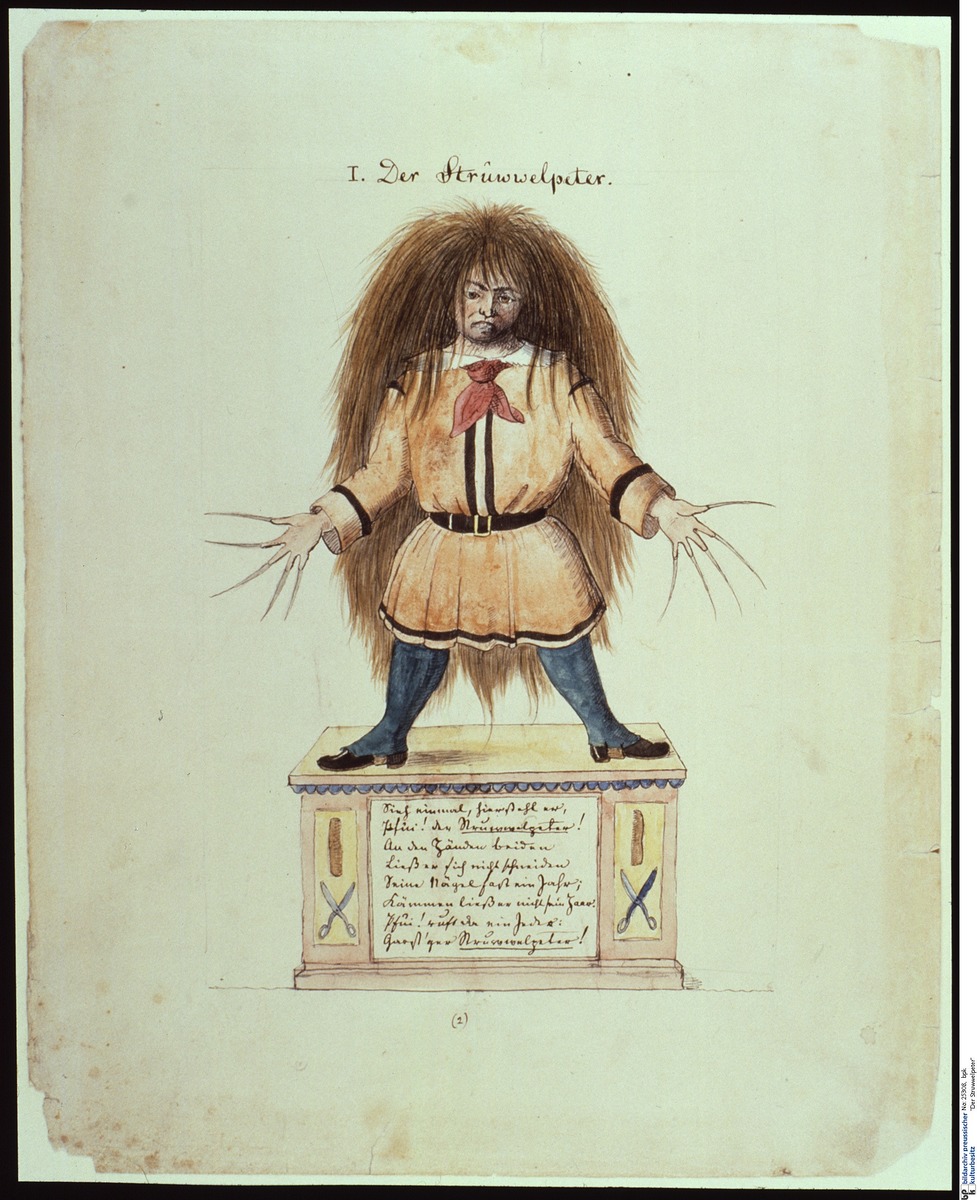Abstract
After searching in vain for a book to give his three-year-old son for Christmas one year, the Frankfurt physician Heinrich Hoffmann (1809–1894) decided to write one himself. In 1845, Hoffmann published Lustige Geschichten und drollige Bilder mit 15 schön kolorierten Tafeln für Kinder von 3–6 Jahren [Funny Stories and Droll Pictures with 15 Beautifully Colored Plates for Children Ages 3 to 6], a collection of stories accompanied by vivid, imaginative illustrations that he had drawn himself. The stories provided instruction in good behavior, addressing a range of topics from basic etiquette (e.g., proper table manners) to larger moral and ethical issues (e.g., how to treat animals). Together with his whimsical illustrations, Hoffmann’s cautionary tales warned of the unpleasant consequences of bad or disrespectful behavior. In 1858, the book was first published under the title Der Struwwelpeter [Slovenly Peter], the name by which it is known today. Struwwelpeter, the colorful protagonist of one of Hoffmann’s most beloved tales, is a headstrong young boy who refuses to cut his fingernails or comb his unruly hair. His poor grooming habits, however, are more than equaled by his naughty behavior. The brash, defiant Struwwelpeter stands atop a pedestal upon which the following verse can be read:
Just look at him! There he stands,
With his nasty hair and hands.
See! His nails are never cut;
They are grim’d as black as soot;
And the sloven, I declare,
Never once has combed his hair;
Anything to me is sweeter
Than to see this Struwwelpeter.
Sieh einmal, hier steht er –
Pfui! Der Struwwelpeter!
An den Händen beiden
Ließ er sich nicht schneiden
Seine Nägel fast ein Jahr.
Kämmen ließ er nicht sein Haar.
„Pfui!“ ruft da ein jeder:
„Garstger Struwwelpeter“
In addition to enjoying tremendous authorial success, Hoffmann went on to become a pioneer in the field of mental illness. In 1859, he published a book on the subject, and in the early 1860s he built a progressive psychiatric hospital outside of Frankfurt. Hoffmann even managed to combine his literary and professional interests, using his stories and illustrations to help ease the fears of his younger patients. One of the most famous German children’s books of all time, Struwwelpeter has also been translated into numerous languages; American author Mark Twain’s own translation was published posthumously in 1935. Mixed media drawing (pencil and watercolor) by Heinrich Hoffmann (1858).
